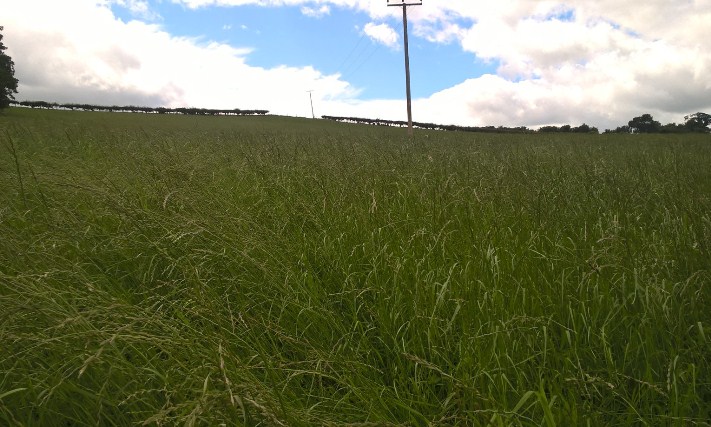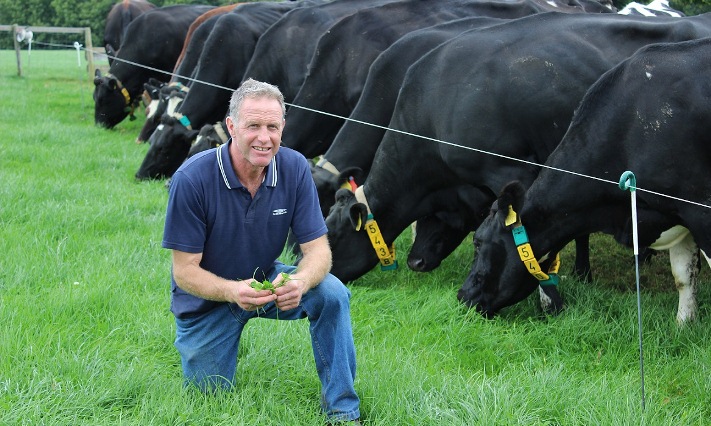Award winning dairy farmer relies on Megabite
Arthur Owen and his cows still grazing high quality grass in mid-September
Grass specialist Arthur Owen of Bodysgaw Isaf, Llanefydd, Dinbych, who has won many farming competitions, including runner-up in this year’s prestigious Royal Welsh Agricultural Society Sir Bryner Jones Memorial Award, has relied on the same grazing mixture for the past 16 years.
He has sown MegaBite from Oliver Seeds, a late heading, persistent, mainly diploid perennial ryegrass, timothy and white clover blend, on his 104-hectare grazing platform, which his 360 dairy cows graze from early February to late November, weather permitting. Good disease resistance and exceptional D-value makes MegaBite ideal for milk production.
Calved in a tight ten-week block and milked twice a day, the cows average 7,200 litres of milk with very little concentrate feed. They produce 3,800 litres off grazed grass and silage, which is cut from 74 hectares of off-lying land.
Arthur Owen and his cows still grazing high quality grass in mid-September
“Our aim is to maximise the production of milk from grass and our fields have to perform,” explains Arthur Owen. “In a good year we are looking to produce up to 14 tonnes of dry matter per hectare, even on our grazing land. MegaBite has never let us down.”
The fields are grazed rotationally behind electric fencing, with the time left for resting and re-growing varying according to the time of year – three weeks in the spring and up to six weeks in the autumn.
“We look after our grass really well and they reward us with long life,” admits Mr. Owen. “If you cannot keep a field of MegaBite going for at least ten years, then there is something wrong with how it is managed.”
Mr. Owen reseeds around 12 hectares a year, across fields that have varying soil types, from heavy clay to shallow limestone. Most times the field is sprayed off, ploughed, rolled and cultivated with a power harrow, before the seeds are drilled in and rolled once more. Recently on fields that cannot be ploughed, the grass seed has been spread over the top of rotavated ground and rolled in with good success.
Reseeds established in late August/September germinate quickly and the sward is grazed with sheep over a matter of days, to encourage the plants to tiller. The field is then left over winter and will be ready for the cows to graze the following spring.
“We treat the new reseeds with care in their first year, but they will be grazed by the cows for short periods in good weather conditions in February or March. We put 50kg of nitrogen every few weeks onto the grazing ground in the growing season. This year we applied sulphur for the first time and the results have been very encouraging.
“Last year we added some stress-resistant festulolium called Lofa into the MegaBite mix, on land that burns out in the summer. This sward grew much quicker in the spring than other fields reseeded at the same time.”

MegaBite and Lofa in one of Mr. Owen’s fields that grew away this spring quicker than other reseeded fields close by.

